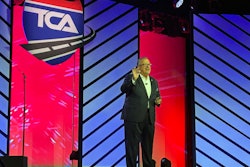According to a Truckstop.com survey, more than 2,000 queried carriers had to work harder in 2023 to stay profitable. This included experiencing a significant increase in workload, driving an additional 3,000 miles on average, handling two more loads each month, and absorbing the cost for 17% of their miles as unpaid deadhead travel.
[Related: Fleet earnings Q4 2023: Carriers feel the impetus of freight market recession]
Brent Hutto, chief relationship officer at Truckstop, noted that as carriers increased workload to stay afloat, this is an indicator of rates and profitability as challenging. “It’s not an indicator that the market is recovering because so far, the low volumes in the marketplace have been the same for over a year,” he said. “But what they do is they transition back to normal, so the amount of loads in the marketplace are just normal.”
Hutto noted that inflation has made it hard for every everybody, thereby, carriers are hauling more than normal. “Since the freight profitability is lower than normal, it means that owner operators will haul more miles. So, it’s not a function of a market recovery, it’s a function of a market challenge … Profitability is just not what it used to be because of inflation, so that’s the real challenge,” he explained.
The survey also noted that despite the decrease in fuel expenses leading to lower costs per mile, over 60% of carriers have identified insurance costs as a significant challenge.
Hutto noted that with more freight being hauled in the market, as well as issues such as increasing freight fraud and theft, insurance costs are bound to be higher. “As a matter of fact, insurance costs were the number one concern after rates,” he said.
While bigger fleets are more adept to implementing strategies to stay afloat in the current market, Hutto noted that this can be a concern for small fleets.
“In markets like these, you have to control what you can control, which is the actual cost of running your operation,” he said. “You need to make sure the trucks are getting the best fuel mileage. You need you to make sure you are able to buy the best in terms of rates, buy fuel with the best prices, and all the things that are your cost factors. … The key to overcoming the market forces is creating better efficiency in your operation.”










